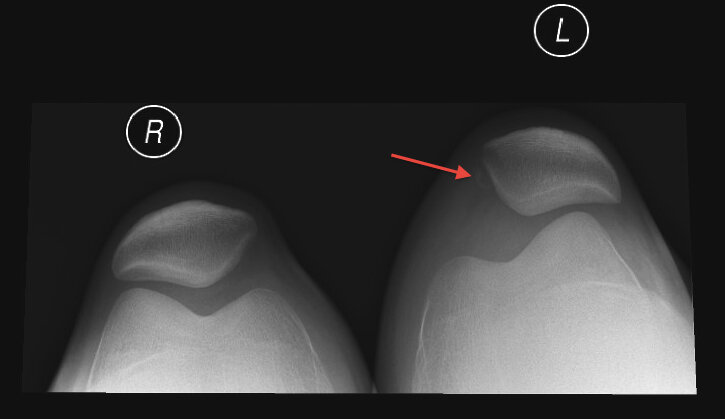Patella Instability
What is Patella instability?
The patella is the medical name for your kneecap. This normally runs up and down in a groove in the front of your knee joint called the trochlea as you bend and straighten your knee. Patella instability is when the kneecap comes out of this groove and dislocates over to the outside of your knee. This normally happens as a result of an injury.
Why did my patella dislocate?
There are many factors which can influence the stability of your kneecap. The first dislocation usually happens as the result of an injury. This can be anything from a minor twisting injury to a heavy collision. After your kneecap has dislocated once, there are a number of factors that determine whether this is likely to keep happening. The shape of your kneecap, the shape of the groove this runs in, the strength of your thigh muscles (quadriceps) and the extent of injury to the ligaments which support your kneecap are all important. If you have loose joints or valgus (knocked) knees, this also increases the chances of further patella dislocation.
How is patella instability treated?
Often the first time your kneecap dislocates it will go back into joint again by itself. Sometimes you will need it to be put back into joint by a doctor or nurse at your local emergency department. Most of the time after your first dislocation the treatment is non-surgical, with rehabilitation and physiotherapy. If your kneecap has dislocated multiple times, surgery may be required to help re-stabilise your patella. If the dislocation has caused damage to the cartilage inside your knee then surgery may be required to repair this damage.
How is patella instability diagnosed?
The diagnosis of patella instability can normally be made from the history of your injury, and clinical examination of your knee by a trained specialist. Investigations may be required to confirm the diagnosis, and to look for damage to the cartilage inside your knee caused by the injury. Further tests may also be required to help determine the best treatment for your knee. These include:
X-rays
Long leg standing x-rays
MRI scan
CT scan
What is the non-surgical treatment of patella instability?
When you dislocate your kneecap, one of the ligaments on the inside of the knee called the medial patella-femoral ligament (MPFL) will be torn. After one dislocation, sometimes this ligament can heal itself. A knee splint may be used until your knee swelling settles, and you may require crutches initially to walk. Once the initial pain has settled, the most important aspects of rehabilitation are to regain range of motion in your knee and to rebuild the strength in your quadriceps muscles. The VMO (vastus medialis oblique) is the most important part of the quadriceps muscle in the front of your knee, which helps to hold the kneecap in its groove. This gets weak after injury and can be strengthened by targeted exercises. Stationary cycling (exercycle) is an excellent way to strengthen your VMO, and can be started as soon as you are comfortable. A physiotherapist can provided you with a specific exercise programme. You should avoid running and sports which involve cutting and twisting movements for at least six weeks after injury. When you return to sport, taping of your kneecap can be helpful – your physiotherapist can show you the proper way to do this.
How successful is non-surgical treatment?
Approximately 60-70% of people who dislocate their kneecap will heal fully without the need for surgery. If dislocation happens more than 2-3 times, it is likely to keep happening and surgery may be required.
Who needs surgery after patella instability?
Most people do not require surgery after one episode of dislocation. The exception to this is when a fragment of cartilage or bone is broken off the surface of the kneecap or the trochlea (groove) at the front of your knee during the intial dislocation. An MRI scan may be recommended to look for this. If this broken bone fragment is small, it can move around the inside of your knee and cause locking or jamming of the knee joint. This can usually be removed with keyhole (arthroscopic) surgery. If the bone fragment is very large, repair of this fragment may be recommended. This requires open surgery to repair the damaged cartilage, and should be done as soon as possible after the initial injury. If you have recurrent instability (your kneecap has dislocated more than 2-3 times), surgical reconstruction of the torn ligaments is often necessary. Click this link to learn more about patella stabilisation surgery.

